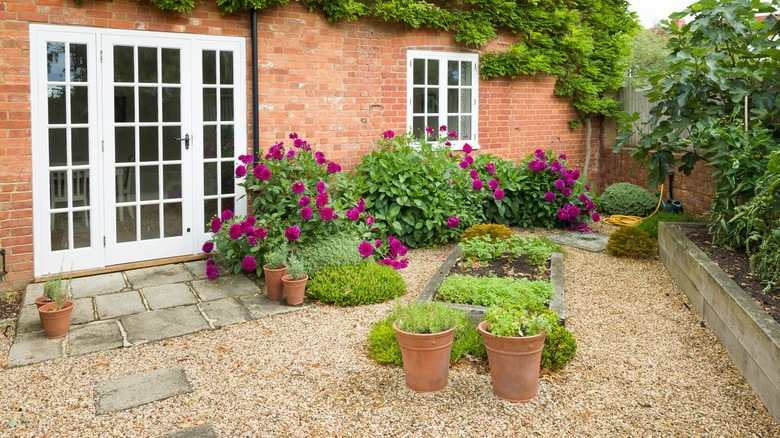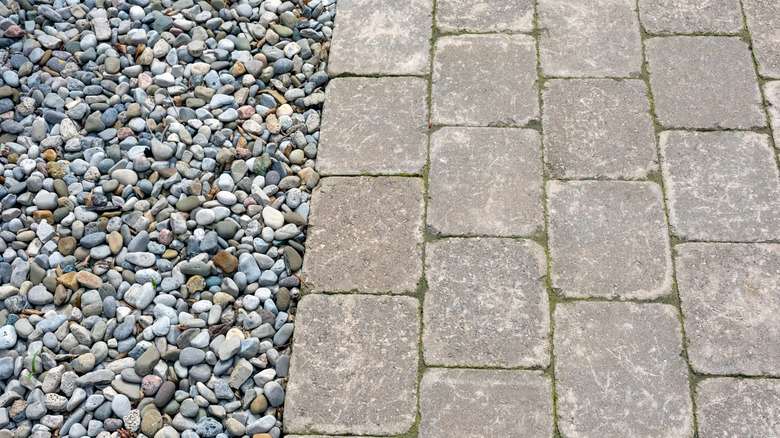The Messy Problem That'll Make You Think Twice About Gravel Patios
Pea gravel is a common landscaping material that many homeowners use as a patio covering. Gravel has a lot of aesthetic appeal and can seem like a great choice, if only for simplicity's sake. It's versatile, it looks nice, and it's pretty cost-effective.
Despite these apparent advantages, there are some less-than-tidy things to consider before you go all-in on making a gravel patio. Pea gravel isn't all it's cracked up to be. It can become frustrating to deal with quickly, actually, due to the fact that — being made of many tiny pieces — it will scatter around and shift its position easily. Foot traffic, rain, and weather conditions can cause the gravel to become uneven and can lead to it moving out of its designated area. On top of this tendency to scatter, debris can get caught in the gravel, requiring constant removal and maintenance. Worst of all, weeds may also crop up in pea gravel — and that's even if you use landscape fabric underneath, which isn't foolproof and can sometimes be difficult to deal with, as well.
So, while gravel might win the battle for your wallet, you definitely need to know these problems in advance, so you don't find yourself regretting your choice every time you're walking out the front door.
Carefully consider how you use pea gravel in home landscaping
Much of the messiness of pea gravel comes with using it in a place where there's a lot of foot traffic. While it's often used in patios and on walkways, this is where the drawbacks become most apparent. Weeds can pop up through the gaps in gravel and can cause its appearance to suffer greatly. You'll then need to put effort into removing them. Placing landscape fabric underneath the gravel, while ensuring good drainage, isn't necessarily the perfect solution for preventing these weeds that people claim it is: The fabric can get torn, and weeds will often grow through it anyway. In addition to maintaining the area by removing weeds, you'll also need to remove twigs, leaves, and debris that is likely to get caught in the gravel as time goes on. It may be necessary to rake pebbles back into place if they get out of their designated area.
All in all, compared to other materials such as concrete, pavers, and natural stone, you'll need to put quite a bit of effort into keeping pea gravel nice and tidy. If you want to avoid some of these headaches, consider pea gravel for other applications instead. There are many ways to use pea gravel in your yard and it can work well for many landscaping projects — it can be used as a garden mulch, as a fire pit base, or as an ornamental design element. Pea gravel can also help you create borders and edges for gardens around your home.
With these big drawbacks, adding pea gravel to a patio isn't such a clear-cut decision. Think carefully about both the pros and cons of pea gravel to decide whether it's worth using for your project or not.

